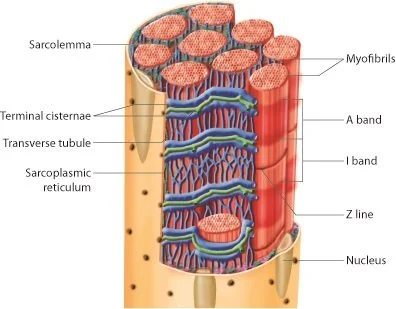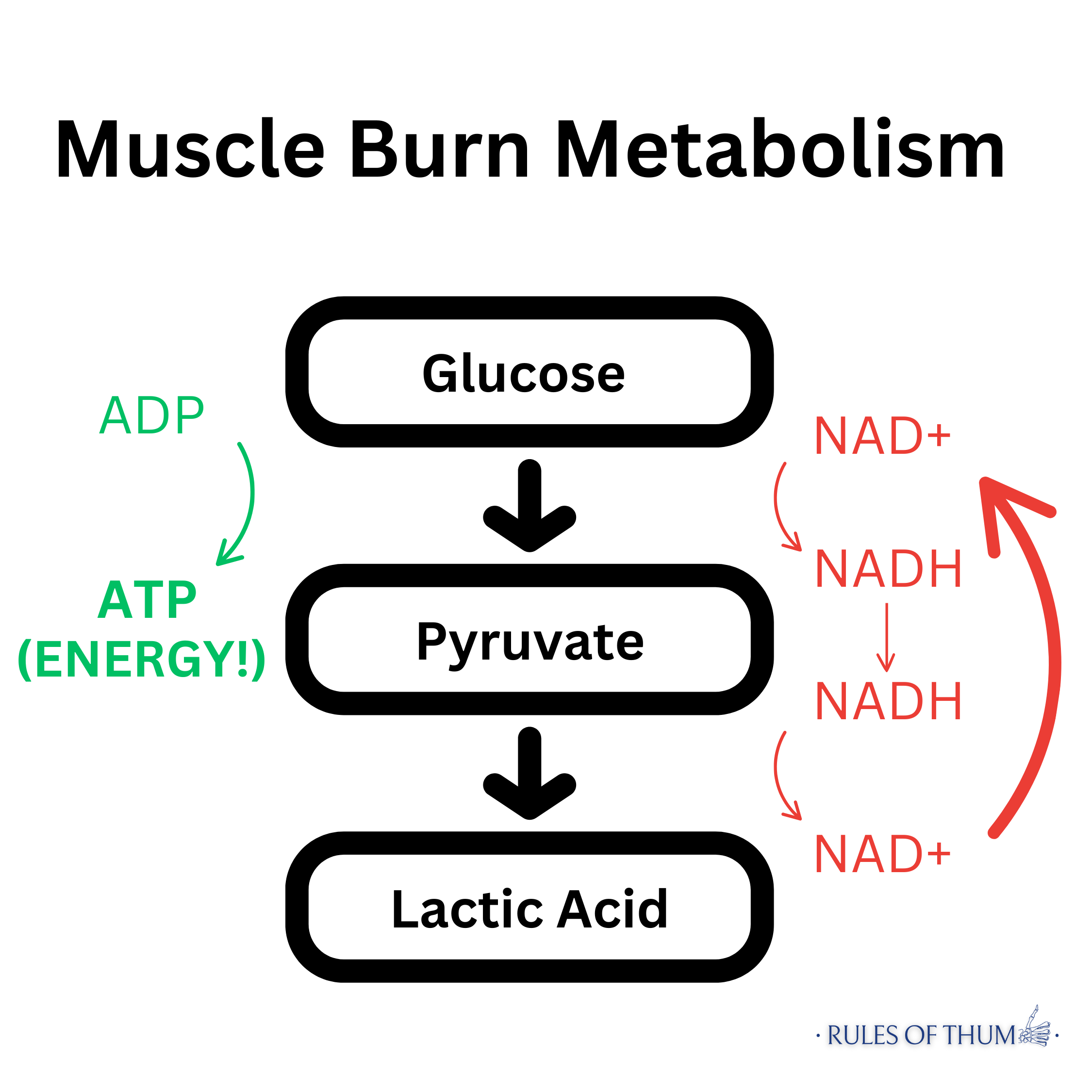Feel the Burn: Why Those Muscles Light Up During Exercise
⌚️ read time: 3.5 minutes
You know the feeling.
You're crushing your workout (or perhaps more likely, sprinting wildly through the airport with a toddler’s car seat in one arm, the toddler and the bag the toddler refused to carry in the other), pushing through those last few reps, when suddenly your muscles start screaming at you with that familiar burn. That screaming fire that makes you wonder if you should push through or call it quits.
But what's actually happening in those muscles when they get to this point? Let’s simplify it so you just might appreciate that burn a little more.
The Complex Muscle Machine
First things first — your muscles are way more complex than they might appear. Each muscle fiber is actually packed with even smaller structures called myofibrils, which are themselves made up of even tinier units called sarcomeres. Think of sarcomeres as the muscle's engine rooms.
These engine rooms contain two types of protein filaments — actin and myosin. Remember those old train movies where lines of workers would pull on ropes to move heavy loads? That's basically what's happening in your muscles, just on a microscopic scale. As this molecular contraction occurs across units of coordinated myofibrils, the entirety of the muscle contracts to exert force.
The Power Plant
As you might imagine, coordinating millions of contractile units at once demands a tremendous amount of energy. This energy comes in the form of ATP (adenosine triphosphate — make sure you remember that for the quiz later).
And your body has three different ways (we’re keeping it simple here) to make this energy:
The Sprint System (Anaerobic via ATP-CP)
This is your muscle's emergency backup generator. It's super fast but can only run for about 20 seconds. Think 100-meter sprint. Or if you’ve ever heard of Tabata training, it’s predicated around this system.
The Middle Distance System (Anaerobic via Lactic Acid)
This system kicks in for slightly longer efforts (20-120 seconds). Just like the first system, it is anaerobic (does not use oxygen) but uses lactic acid to generate energy. That burn you feel in the moment you’re lifting is thought to be from the acute buildup of lactic acid.
The Marathon System (Aerobic via glucose and fatty acids)
This is your much much much more efficient, long-term energy system. A reasonable analogy would be akin to solar power — clean and sustainable, but it can't produce energy as quickly as the other systems.
Return to the Burn
I will admit, there is some controversy over lactic acid’s role in muscle burn. As with many controversies discussed in my previous articles, or in the scientific community at large, we need to be really clear about what question we are trying to answer.
Meaning, when we set out to answer the question of ‘what causes muscle burn’, are we talking about the acute burn you feel as you are lifting the weight? Or the aching muscle soreness you feel a day or two later? You can see how in casual conversation, these might both be easily mixed up by talking about ‘sore muscles.’
Remember that middle-distance system I mentioned above? When you're pushing hard in the gym, your muscles need energy faster than your body can deliver oxygen. This leads to energy generation via anaerobic metabolism (literally meaning "without oxygen"), and this system creates lactic acid as a byproduct.
That burning sensation in the moment? That is the buildup of metabolites from this anaerobic process, including lactic acid.
However, that extra soreness you feel a day or two later? That's called Delayed Onset Muscle Soreness (DOMS), and it peaks around 24-48 hours after exercise. It's especially prevalent when you try new exercises or focus on "negative" reps (lowering the weight slowly). This pain is not from lactic acid (contrary to popular belief), but rather the overall effect of tiny tears in your muscle fibers and the inflammation that follows.
Takeaways:
Your muscles are incredibly complex machines with multiple energy systems
That burning sensation during exercise is your body's way of telling you you're working anaerobically
Soreness that peaks a day or two later is normal and actually part of the repair process involved in getting stronger
Remember, whether you're doing a quick sprint or a marathon, your muscles are performing a complex balancing act of chemical reactions to keep you moving. Next time you feel that burn, you'll know exactly what's happening under the hood!
And remember, while some muscle burn during exercise is normal and even beneficial, sharp or sudden pain is different — Pain doesn’t always mean Gain.



